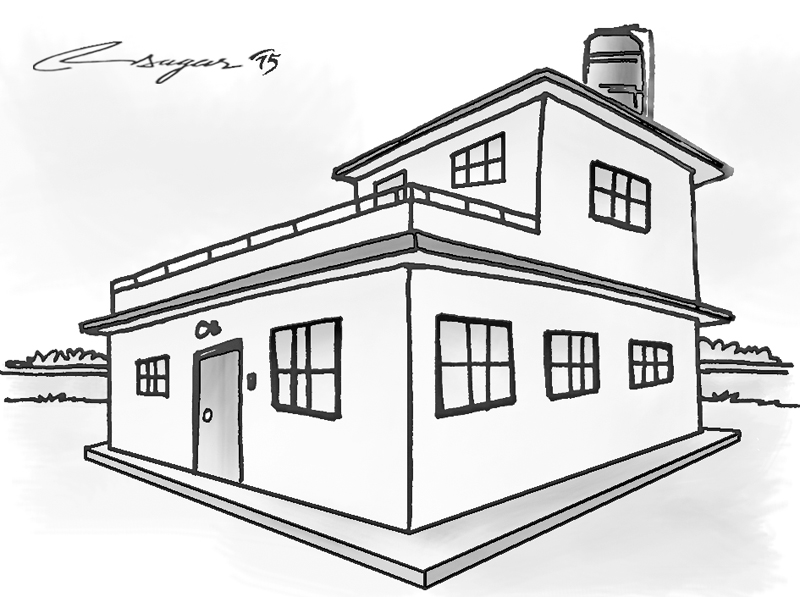Rebuilding rural Nepal Lessons for improvement
Integration of vernacular technology and incorporation of justified components within such construction should be accomplished before deployment of reconstruction efforts
The Gorkha seismic sequence started with the strong 7.8 Richter scale magnitude earthquake followed by aftershocks of 6.7 and 7.3 magnitudes have caused severe damage amounting to much more than 400 billion Nepalese rupees. About 95 per cent of the buildings damaged are concentrated in the countryside of central Nepal and adjacent areas. However, dialogues regarding rural reconstruction are overshadowed by something else. As the monsoon has bid farewell already, the weather extremity could hit hard during winter in the high hills of central Nepal. Immediate interventions are needed in terms of re-framing the rural reconstruction modules and thereafter activities. Rural Nepal seldom accentuates the sophisticated technologies, rather their resolution is no more than the vernacular technologies to be adopted for rebuilding their shelters. In lieu of modern and uneconomic reconstruction, rural Nepal needs vernacular earthquake resistant technologies for cost-effective rebuilding processes. With the aim of reassuring the vernacular construction technologies engrossed by local materials and masons, a team of experts demonstrated a vernacular rural house within five days in Mankhu of Dhading district.
The house was constructed implementing gabion bands, which is an innovative technology so as to assure safety of houses during earthquakes and lessening the damage in terms of structural as well as non-structural failure. Careful selection of clay in the neighborhood and using local craftsmanship and stones available from the knocked down rubble were used for reconstructing a house of a Dalit family in Dhading. The house was constructed along with a chimney installed within it so as to improve the health of rural woman. Moreover, it was observed that a few of the houses within the neighborhood had chimneys installed in houses. An integrated reconstruction aspect was deployed for construction of the house with a small budget using local craftsmanship, masons and resources.
The didactic lessons from the 2015 Gorkha earthquake was carefully considered like prohibiting organic clay, assuring homogeneity of walls and proper connection between the stones used for constructing a wall. A low cost housing technology in vernacular flavor was thus successfully constructed and handed over within five days. In this process, six masons were also trained about gabion band technology and other earthquake resistant construction technologies using native low cost resources as well.
Tracking back the vernacular aspects of rural Nepal for comfort and compliance is a must for future reconstruction. In such practices pondering over the modernized sophistication doesn’t assure comfort and low cost. For instance, Barpak village will be awesomely adorned if we are again reconstructing the houses in a traditional fashion assuring seismic safety components. Engrossing the vernacular technology in terms of capacity building of local workmanship and indigenous skills are direly needed in Nepal to perform large scale reconstruction works, making all those efficacious with assurance of safety in future events. Still people flaunt their local technologies of construction. Surely their good aspects are to be endorsed and somehow rectified. However, such technologies are nevertheless sufficient for assuring seismic safety in rural Nepal.
So, integration of vernacular technology and incorporation of justified components within such construction should be accomplished before deployment of reconstruction efforts. Rather than stockpiling the stones without any other earthquake resistant features, gabion bands could be the ideal solutions.
Small amount of timber and proper selection of building form along with the vernacular sense may turn the performance paradigm without altering the vernacular flavor. The precepts of timber engendering the rest of the materials and majestically standing in most of the damaged houses have tales to deflect the attention towards any other ‘foolish’ techniques. However reinforcement of all those grandfather-led technologies are direly needed and somehow, it has been done through gabion construction practices in remote areas.
Unlike gabions, frugal conscience could be instrumental if we are able to use timbers from community forests in rural Nepal. However, although the earlier practice should be guided by outnumbering plantation in the vicinity before chopping down a single tree, reconstruction can’t accelerate undermining environmental issues and sacrificing the ecosystem either. We haven’t brainstormed in reconstruction and still budgetary allocations have to go through stringent policies and practices of the bureaucracy. The paralyzed National Reconstruction Authority (NRA) should do everything possible with regard to rural reconstruction. Discussions should not be seemingly broader, rather all the trysts are to be overshadowed by expert and innovative ideas because we can’t afford prodigal solutions and going towards frugality is the only way left. Corruption in terms of technology transfer, budget malfunction and fabrication with voluminous reports without assurance of proper safety are visible challenges. However, in every step, challenges would ooze out and rule out the construction works.
The writer is an engineer






